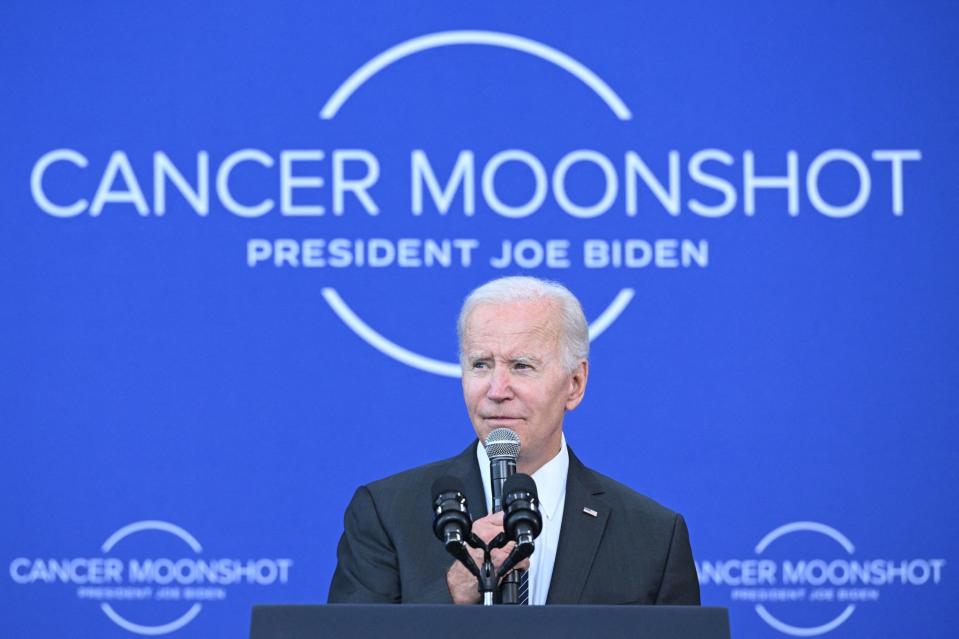America first declared war on cancer half a century ago. Today’s regulatory hurdles won’t help us win

Bruce Ratner is a philanthropist and real estate developer. He is the co-author of Early Detection: Catching Cancer When It’s Curable.
In late 2015, my brother Michael Ratner was brought to the hospital with feelings of nausea. Eventually, he was taken to Memorial Sloan Kettering Cancer Center for treatment of a metastatic brain tumor. He was 71 years old and was one of the most famous human rights lawyers in the world. Despite his prominence, and Sloan Kettering’s excellence, by May 11 of 2016 he was dead.
My brother’s tragic end points to everything we are doing wrong on cancer. When President Richard Nixon declared war on cancer on Dec. 23, 1971, he had hopes that cancer would be cured within five years. More than half a century later, we have yet to come close to winning that war.
We spend $200 billion annually treating cancer and yet it remains the second leading cause of death in the U.S., killing over 600,000 Americans annually. The time has come to reconsider our approach to this dread disease. Even though Nixon’s war has not yet been won, we have learned a tremendous amount about cancer over the last 50 years, including the fact that early detection is the single best thing we can do to reduce cancer deaths. Treatment is of course necessary, and terrific oncologists at Sloan Kettering and other top cancer centers do tremendous work, but they are fighting an uphill battle against cancers caught too late in the game.
There are already some effective tests that catch cancers early, including well-known screenings such as low-dose (and low-cost) CT scans for lung cancer, mammograms for breast cancer, Pap smears for cervical cancer, PSA blood tests for prostate cancer, and colonoscopies for colon cancer. Unfortunately, these tests are not enough. Approximately 70% of total cancer deaths come from cancers that currently lack recommended screening.
We need to capitalize on the emergence of a whole new generation of advanced technologies that use genetic sequencing and machine learning to aid in early detection and make the fight against cancer even more effective. This includes multi-cancer detection tests (MCEDs), some of which are already available to patients and doctors and are finding cancers and saving lives. More tests are expected to be available soon. These tests can screen for multiple types of cancers and catch them when it is still early enough to do something about them. These tests look for DNA fragments in the blood to check for the presence of cancer, and if detected, ascertain the origin so that it can be targeted and addressed. One of the most promising tests has a false positive rate of less than one percent.
As promising as these technologies are, their pathway to adoption is taking far longer than makes sense. Massive regulatory hurdles stand in the way. Worries about the cost of new tests and questions about whether early detection saves lives are sadly impeding progress in the effort to save lives. The Food and Drug Administration is studying MCEDs and has approved additional tests but it might require waiting for longitudinal studies that would follow patients for decades, before greenlighting widely available use. And antitrust regulators, in a step that seems to directly counter President Biden’s widely heralded Cancer Moonshot agenda, are skeptical of vertical integration mergers that could speed the adoption of such tests.
Smaller companies often need the resources of larger companies to both increase market access and manage the government’s regulatory requests. In one case, the Federal Trade Commission’s involvement scared off a large investor, which could slow adoption by depriving a smaller innovator of needed resources from a more established player.
We stand at the cusp of exciting new technologies that will help us win a war that our government declared half a century ago. Unfortunately, it is the very same government that may be hampering progress in that war at a time when it is so badly needed.
More must-read commentary published by Fortune:
Booz Allen Hamilton CEO: America needs a whole-of-nation approach in its great power competition with China
NYC comptroller: Food delivery apps are blaming minimum pay for inflation. It’s baloney
Big Tech employees missed out on $5.1 billion in 401(k) gains over the last decade because of fossil fuels, new research finds
No one wants another pandemic—but bird flu has already flown the coop
The opinions expressed in Fortune.com commentary pieces are solely the views of their authors and do not necessarily reflect the opinions and beliefs of Fortune.
This story was originally featured on Fortune.com

 Yahoo Finance
Yahoo Finance 